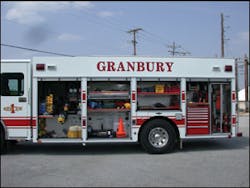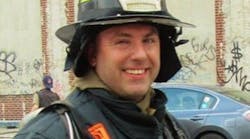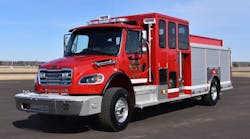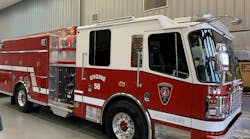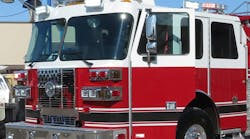The November 2005 installment of The Apparatus Architect covered some of the considerations when determining the type and size of generator system that should be designed into new rescue apparatus. Once your apparatus committee has determined the preliminary tool and equipment list and the number of personnel who will staff the rig, the next step is to identify the major fixed components that will require space within the rescue body. Component items such as generators, light towers, air cascade systems, ground ladders and fire pump systems will all have an impact on the overall design of the apparatus.
As the truck committee ponders the many choices in these areas, one of the most important decisions to make is the type of chassis that will carry the body, personnel and equipment. A wide range of commercial and custom-built chassis can be readily adapted for rescue squad applications. There are a number of considerations that should be reviewed by the committee before making a decision on which style of chassis may be best suited for the department.
Commercial Chassis Options
From an overall perspective, commercial chassis will generally cost less than a similarly equipped custom chassis; however, this should not be the most important factor when choosing a chassis. Commercial chassis will generally offer a smaller range of engine and transmission choices and are well suited for chassis applications up to 40,000 pounds gross vehicle weight rating (GVWR) where engines in the 300- to 350-hp range will meet the department’s needs. Commercial chassis are capable of carrying two people in the front of the cab and up to five in four-door-cab configurations. As these cabs are designed for inner-city delivery units, the space available for equipment such as self-contained breathing apparatus (SCBA) and radios are limited and may cause you to place some of this gear in other areas. Make sure that you see and review a chassis that is similar to what your department is considering before planning the interior layout of the cab.
Heavy-duty Class 8 chassis provide a wider range of diesel engine and cab options with heavier GVWR capabilities. These types of chassis are well suited for walk-in-body rescue units where high-horsepower engines are required and different types of auxiliary braking devices such as engine brakes and transmission retarders are available. Class 8 chassis also provide more options with respect to integral frame extensions, which can be useful for front-winch applications. Where a department has to design a unit to meet a specific overall length requirement, the heavy-duty chassis generally have an unlimited number of wheelbase offerings to match the needed cab to axle dimension for the body.
Both types of commercial chassis will require upgrades to the electrical system to meet the total connected load demands of the apparatus. As most chassis will come standard with only two or three batteries and a low-output alternator, both of these components will have to be replaced by the body builder. Depending on the number and type of body lights and warning lights that will be used, a minimum of four group batteries, together with a minimum of a 320-amp alternator and a load-management system, will need to be provided and installed. Consideration should be given to locating the batteries to a slide-out drawer in the cab-step area to allow access for maintenance.
Other considerations for commercial chassis should include the position of cab-mounted fuel tanks and exhaust systems and how these components will interface with body-mounting and other equipment. Step surfaces located under the cab doors may have to be covered with non-slip surfaces if not available from the chassis manufacturer, or you may have to specify that all step surfaces be covered with aluminum tread plate with step areas that meet the requirements of the National Fire Protection Association (NFPA) 1901 standard. If your truck committee is considering mounting equipment such as winches, reels and warning devices on the front bumper extension, make sure that these components are not affected by the tilting hood assembly or a stationary grill may be needed to provide clearance for this equipment.
Safety components such as non-slip handrails should be supplied at all cab entrance areas, as standard hand rails may not be compliant with NFPA standards. Also, specify that all step surfaces should be lighted when any cab door is opened and that sufficient lighting is provided inside the cab for reading and nighttime operations.
As these chassis are provided primarily for commercial use, there are a number of seemingly insignificant components that are necessary to provide a safe and reliable chassis for fire and rescue operations. Overall, the commercial chassis can provide for many years of operation; however, careful planning is required to ensure that all of the necessary chassis components and options are specified with the original chassis order. These chassis are typically built within 90 to 120 days, so once the order is placed with the respective chassis manufacturer, little time is available to change the configuration of the chassis.
Custom Chassis
Custom chassis by design offer a wider range of cab configurations, engine and transmission combinations and almost an infinite number of options for the truck committee to consider. For many departments, the decision as to whether to specify a custom or commercial chassis depends on other units that you have in your fleet. For example, if all of the engine and ladder company apparatus are on custom chassis with 400-plus-hp engines and seating for six people in the cab, it is unlikely that you would design a rescue unit that does not have similar components to enhance the driver training and maintenance aspects.
As a “typical†custom chassis can cost between $35,000 to $40,000 more than a commercial chassis, the duty cycle and staffing levels of the apparatus will many times dictate which type of chassis would be more beneficial for the department. Also, safety may play a role as custom-cab apparatus withstand a rollover better than their commercial counterparts. Many departments are specifying tandem-axle rescue apparatus, which enable them to carry additional equipment regardless of body design. Here, the custom chassis offers a significant advantage as the cabs can carry additional equipment and personnel without having to make the body longer to compensate for equipment that cannot be safely located in smaller commercial cabs.
For a number of years, the walk-in-style rescue body was favored where all personnel except the driver and officer rode inside of the body. As departments began to increase the amount of tools and equipment they needed to carry, the non-walk-in unit began to increase in popularity, since this style of body can carry more equipment in a given body length than the walk-in style because the area used to carry personnel can be converted into equipment storage space. Where the fire station bay space dictates the allowable length of the apparatus, the tool and equipment list will often determine which type of body design and chassis will be of most benefit to the department.
Custom fire chassis can easily be adapted for rescue squad work, as the required electrical components such as large-output alternators and chassis-integrated load-management systems are designed into the unit. Other components such as cab compartments, front-bumper extensions with reinforcements, chassis-stability systems and seatbelt warning devices are all commonly available. Each of these systems comes at a cost, but when evaluating the life cycle of the apparatus and annual operating costs, each department can analyze which style of chassis will best meet its needs.
The next segment of The Apparatus Architect will discuss other body components and equipment that you may wish to consider in designing your new rescue squad apparatus.
Tom Shand, a Firehouse® contributing editor, is a 33-year veteran of the fire service and works with Michael Wilbur at Emergency Vehicle Response, consulting on a variety of fire apparatus and fire department master-planning issues. He is employed by American LaFrance and is assigned to the Hamburg, NY, facility. Michael Wilbur, a Firehouse® contributing editor, is a lieutenant in the New York City Fire Department, assigned to Ladder Company 27 in the Bronx, and has served on the FDNY Apparatus Purchasing Committee. He consults on a variety of apparatus-related issues around the country. For further information, access his website at www.emergencyvehicleresponse.com.
